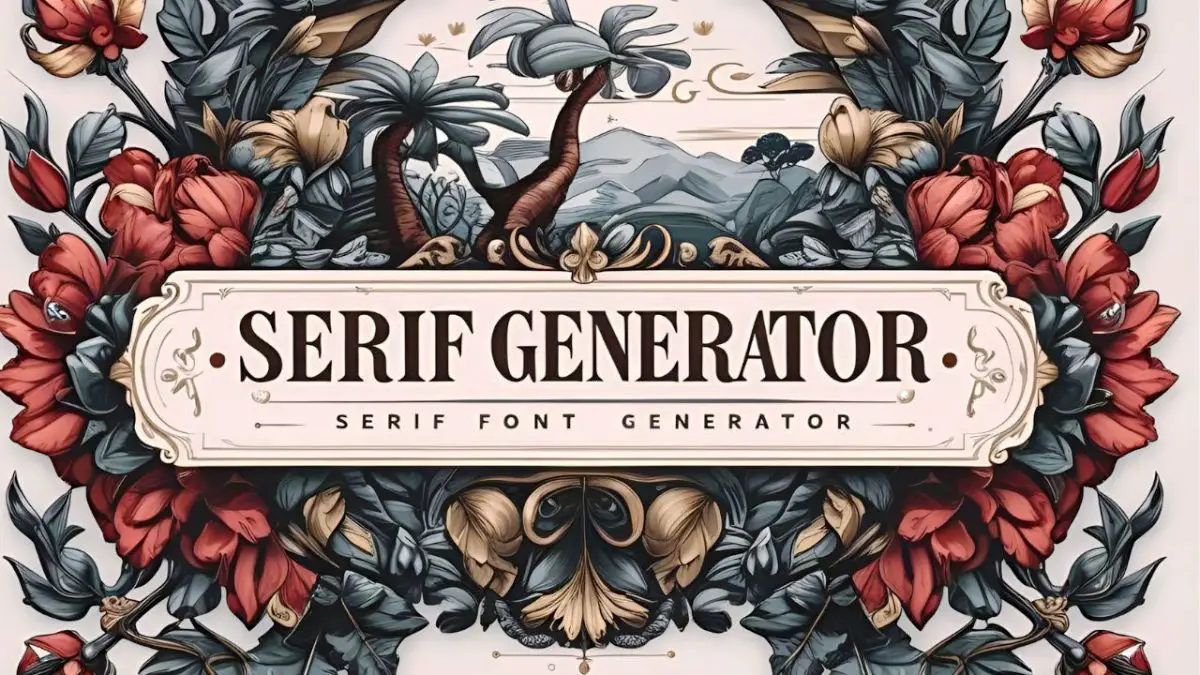Serif Font Generator
Transform your text with beautiful serif fonts, styling options, and easy customization

Enter Your Text
Font Selection & Styling
Serif Font Free Download
Create elegant, professional text with our Serif Font Generator. Download authentic serif fonts for free and elevate your designs with timeless typography that exudes sophistication and readability.
Download Serif Fonts FreeWhat are Serif Fonts?
Serif fonts are characterized by small decorative lines or strokes (called “serifs”) that extend from the main strokes of letters. These classic typefaces have been the cornerstone of print design for centuries, dating back to early Roman stone carvings and traditional typography.
Our Serif Font Generator allows you to create professional-quality text using these elegant typefaces, perfect for business documents, academic papers, book publishing, wedding invitations, and any design that requires a touch of sophistication and improved readability.
Key Features
Classic Serif Typography
Generate text with authentic serif fonts including Times New Roman, Georgia, Garamond, and other timeless typefaces known for their elegance and readability.
Professional Quality
Create print-ready text with proper kerning, spacing, and typographic refinement that meets professional design standards.
Completely Free
No registration required, no watermarks. Generate unlimited serif text and download the fonts absolutely free for both personal and commercial use.
Customization Options
Adjust font size, color, weight, and style to create the perfect serif text for your specific projects and design needs.
How to Use
- Enter Your Text: Type the text you want to convert into serif font
- Select Font: Choose from our collection of classic serif typefaces
- Customize: Adjust size, color, and styling options to match your vision
- Preview: See your text transform instantly with real-time preview
- Download or Copy: Save your generated text or get the complete font files
Popular Serif Fonts
Classic Serif Typefaces
- Times New Roman: Designed in 1931 for The Times newspaper, now the standard for academic papers and professional documents
- Georgia: Created by Matthew Carter in 1993 specifically for screen readability with elegant proportions
- Garamond: Based on the designs of Claude Garamond from the 16th century, known for excellent readability
- Baskerville: Designed by John Baskerville in the 1750s, known for its sharp contrasts and refined character shapes
- Palatino: Created by Hermann Zapf in 1948, combines classical design with modern functionality
Modern Serif Variations
- Didot: Developed in the late 18th century by Firmin Didot, features dramatic thick-thin transitions for a sophisticated look
- Bodoni: Created by Giambattista Bodoni in the late 18th century, characterized by its strong contrast and elegant appearance
- Cambria: Designed by Steve Matteson in 2004 specifically for Microsoft’s ClearType rendering technology, with sturdy serifs for on-screen reading
- Rockwell: Designed by the Monotype Corporation in 1934, a slab serif with bold, distinctive character
Perfect Applications
Professional Documents
- Business Reports: Add credibility and readability to corporate documents
- Academic Papers: Meet formatting requirements for scholarly publications
- Legal Documents: Ensure clarity and professionalism in contracts and briefs
- Résumés & CVs: Create sophisticated professional profiles
Publishing & Design
- Book Typography: Ideal for body text in books and publications
- Magazine Layouts: Create elegant article text and headlines
- Logo Design: Add a touch of tradition and authority to brand identities
- Wedding Stationery: Perfect for invitations, programs, and formal announcements
Serif Typography Characteristics
Design Elements
- Serifs: The small projecting features at the end of strokes that define these fonts
- Stroke Contrast: Variation between thick and thin lines within characters
- Axis: The imaginary line that connects the thinnest parts of curved letters
- Bracketed Serifs: Curved connections between serifs and main strokes
Readability Benefits
- Improved Reading Flow: Serifs create a horizontal line that guides the eye
- Character Distinction: Clearer differentiation between similar letters
- Reduced Eye Fatigue: Better for extended reading in printed materials
- Professional Appearance: Conveys authority, tradition, and reliability
Font Installation
Windows
- Download and extract the ZIP file
- Right-click the font files (.ttf or .otf)
- Select “Install” from the context menu
- Fonts will be available in all applications
Mac
- Download and extract the ZIP file
- Double-click each font file
- Click “Install Font” in Font Book
- Fonts will be ready to use system-wide
Typography Best Practices
Serif Font Usage Tips
- Pairing with Sans-Serif: Create contrast by using serif fonts for headings and sans-serif for body text (or vice versa)
- Print vs. Digital: Serif fonts typically work better in print, while larger sizes are needed for digital displays
- Line Spacing: Use 1.15 to 1.5 line height for optimal readability with serif fonts
- Size Considerations: Avoid using serif fonts smaller than 10pt in print or 12px on screen
Need help with your content creation? Try our AI Essay Writer and AI Story Generator to pair with your beautiful serif typography.
Frequently Asked Questions
Serif fonts have small decorative lines or “feet” at the ends of letter strokes, while sans-serif fonts (meaning “without serif”) lack these features and have clean, straight ends. Serif fonts are traditionally associated with formality and professionalism, while sans-serif fonts are perceived as more modern and casual.
Serif fonts are generally considered more readable in printed materials as the serifs help guide the eye along text lines. For digital screens, especially at smaller sizes, sans-serif fonts may be more legible. However, at larger sizes and higher screen resolutions, serif fonts perform well in both mediums.
Yes, all serif fonts included in our download package are free for both personal and commercial use. Always check the specific license included with each font for any usage limitations.
Times New Roman is the standard for most academic papers, particularly in MLA and APA formatting. Other acceptable serif fonts include Georgia, Garamond, and Cambria, but always check your specific institution’s guidelines.
Yes, with modern high-resolution displays, serif fonts can work beautifully on websites, especially for headings and featured text. Georgia and Cambria were specifically designed for screen readability. For body text, consider using slightly larger sizes and adequate line spacing for optimal legibility.
Related Typography Tools
Enhance your design workflow with our other creative text tools:
Fancy Font Generator
Transform ordinary text into stylish, decorative typography for social media and creative projects.
Try Fancy Font Generator →Calligraphy Font Generator
Create elegant script and handwritten-style text with our calligraphy tool.
Try Calligraphy Font Generator →Case Converter
Transform text between uppercase, lowercase, title case, and other formatting options.
Try Case Converter →Word Counter
Analyze text length, readability, and optimize content for better engagement.
Try Word Counter →